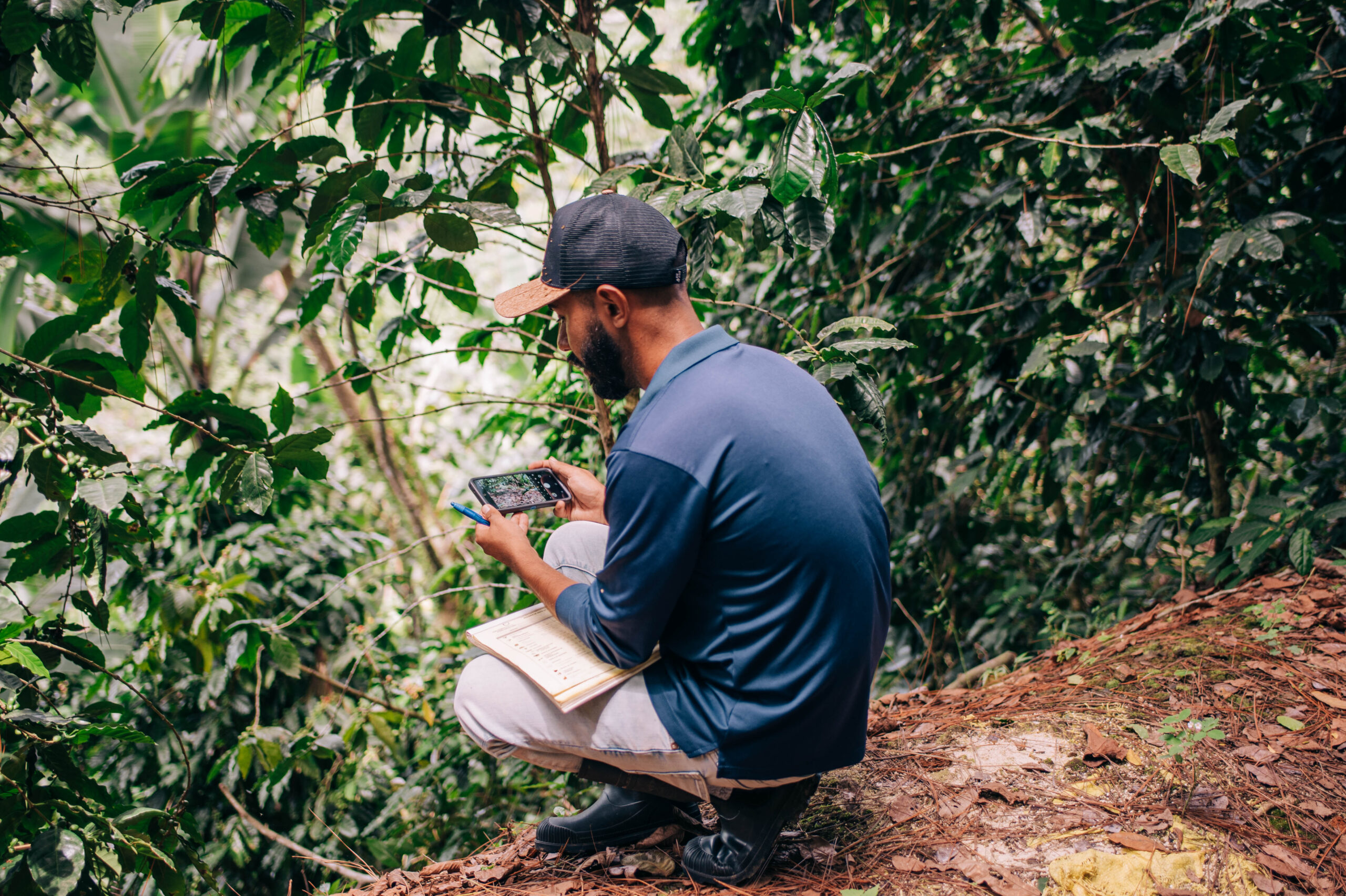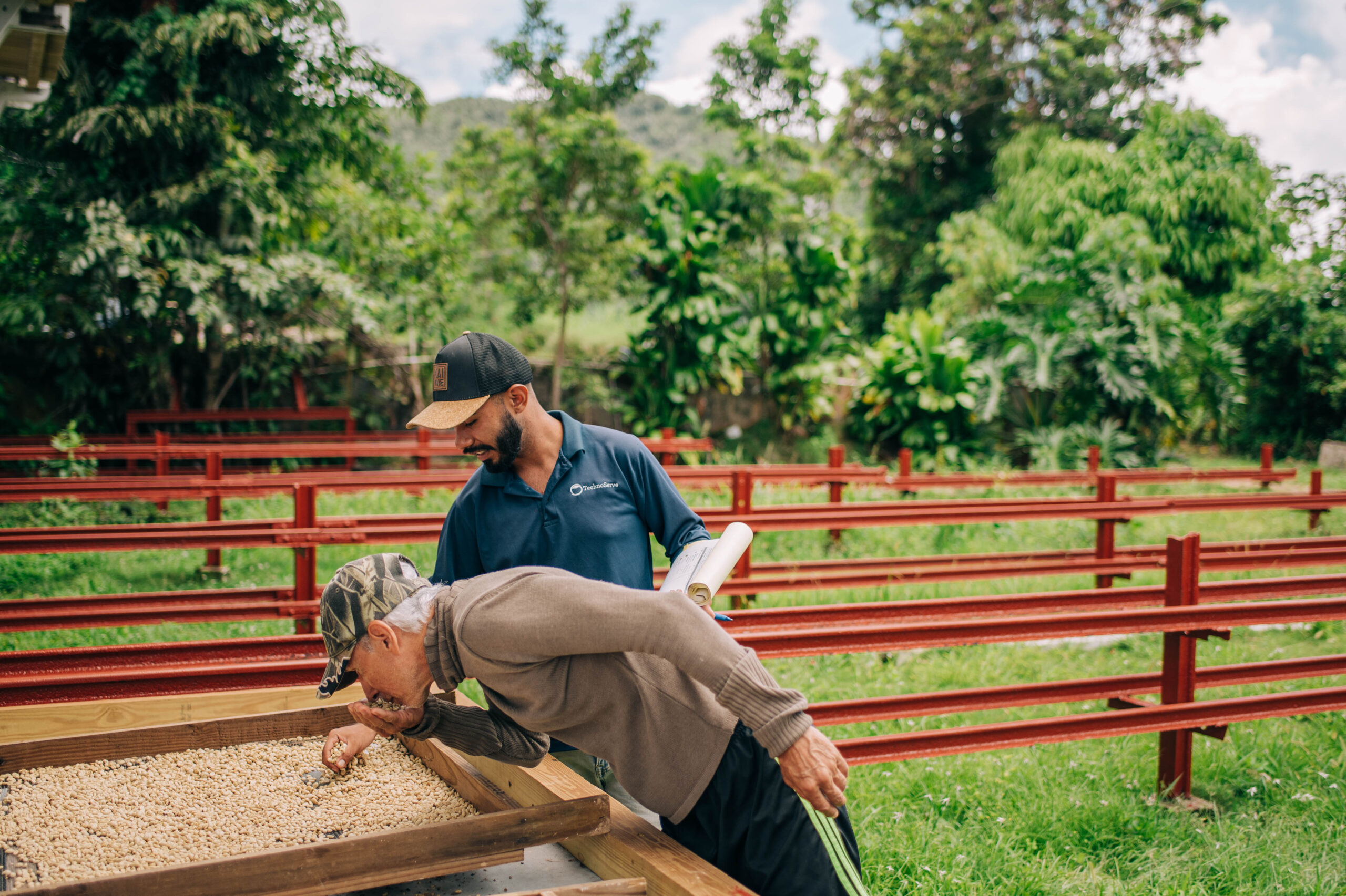Sustainable Farming Practices in Puerto Rico: Carlos Cordero’s Regenerative Coffee Journey
Meet Carlos Cordero, a smallholder coffee farmer and TechnoServe farmer trainer in Puerto Rico who is teaching other farmers in his community how to improve their coffee production.
My farm is perched on a hillside in the mountains of Sabana Grande, Puerto Rico. I produce coffee and other crops here with my parents on our small family farm. Although coffee is a big part of our lives now, that was not always the case.
How Sustainable Farming Practices Began on a Puerto Rican Coffee Farm
Back in 2019, I saw a post on a TechnoServe Facebook page illustrating what areas in Puerto Rico support coffee production. Seeing that post is what initially motivated me to consider growing coffee. I called the TechnoServe office and scheduled a farm visit with one of the farmer trainers at the time.
It wasn’t until we joined the TechnoServe program that we planted our first coffee trees. We started out with a small number of trees, but over time, we established a full cuerda (slightly less than one acre) of coffee interspersed with citrus trees, native shade trees, starchy vegetables like plantains and bananas, taro (yautía), malanga, avocados, and other fruits. We also raise cattle and laying hens.
Before working with TechnoServe, our main challenge was how to get started in coffee farming. We felt like we didn’t have enough knowledge, and what information we did have came from informal sources like social media and conversations with other farmers.
Through the program, we learned key techniques to improve our coffee, such as:
- Establishing shade to protect the coffee trees and improve their development
- Contour planting (planting crops along the natural curves of the land) to prevent erosion and optimize land use
- Soil management to improve the structure and moisture retention of the soil
The close guidance of TechnoServe farmer trainer Christian Ramos helped us modify our practices to better withstand runoff, demonstrating the value of these techniques early on.
Facing Setbacks in Sustainable Coffee Farming
But despite using these new techniques, we still ran into problems on our farm. Pests such as leaf miners, mealybugs, and mold began to reduce our coffee yields. We were also unaware of the correct doses, cycles, and types of products to use on our trees, which sometimes resulted in overdosing or deficiencies.
We also had limited time and money to dedicate to the farm since it was just my parents and me. Then, to make matters worse, Hurricane Fiona hit Puerto Rico in 2022, causing significant damage to our farm. The storm harmed the trees’ development, and about 75% of our trees were damaged.
Training and Learning Sustainable Farming Techniques
In the second phase of the program, I received frequent visits from farmer trainers Damaris Torres and Zuleyka Lugo, who adapted recommendations to the specific conditions of our farm. This personalized support, along with constant follow-up, transformed the way I applied and understood agricultural practices.
The field visits organized by TechnoServe became a key learning space. Instead of just listening to theory, I participated in practical activities directly on the demonstration plots, applying the techniques taught in real time and immediately bringing them back to my farm. The regenerative practices we adopted included:
- Growing vetiver to stabilize the land, control erosion, and improve soil structure.
- Adding cover crops (canavalia, perennial peanut, and Lázaro pigeon pea) to conserve moisture, regulate temperature, and promote microbial biodiversity.
- Increasing shade in critical areas of the coffee farm to improve the microclimate and reduce stress on the plants.
- Technical pruning (tissue renewal, post-harvest sanitation, sprout selection, and desuckering) revitalized the coffee trees and increased their productivity.
Tangible Impact on the Farm and the Family
The results of these practices have been transformative:
- Soil health: greater moisture retention, more stable structure, and an increase in beneficial microorganisms.
- Greater biodiversity: an increase in beneficial insects that help with biological control.
- Optimized microclimate: cooler temperatures and ideal conditions for coffee.
- Economic savings: reduction of weeds thanks to cover crops and precise use of amendments, avoiding unnecessary expenses.
- Greater resilience against pests and extreme climatic events.
My family also felt the impact. My father, a lifelong farmer with an industrial mindset, has become convinced of the benefits of these practices and is now implementing them throughout the farm.
Future Vision: Expanding Regenerative Agriculture Beyond Coffee
I feel secure and motivated as a young coffee farmer. I now understand the value of each technique and the long-term benefits. I plan to expand regenerative practices to other crops, such as cocoa, starchy vegetables, and other vegetables, to achieve food self-sufficiency and strengthen Puerto Rico’s agricultural sustainability.
Tips for Farmers Interested in Sustainable Agriculture
My recommendation would be to adopt regenerative practices. Visit my farm or the farms of other farmers who already use them and see the before-and-after results. The changes are evident: in the soil, in productivity, in resistance to pests, and in your pocket. These practices take care of the farm, the economy, and the future.


